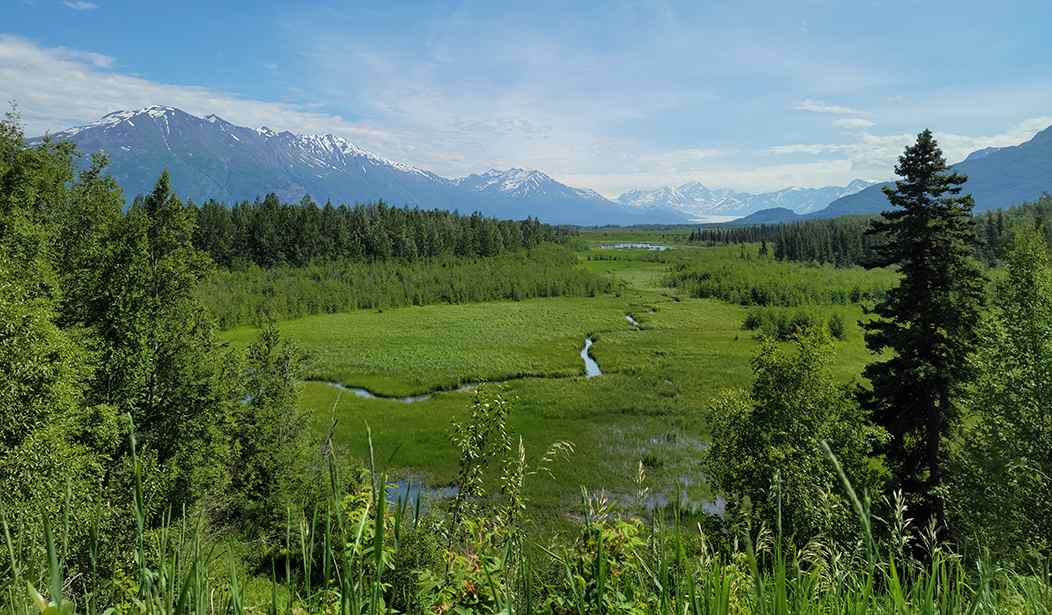It's Earth Day again.
The first Earth Day was in 1970. It was established as a day to openly support environmental protection, and in 1970, there was a lot of environmental protection to be done; I remember it. But that battle has largely been won. Here in the United States, we have cleaner air, cleaner water, and cleaner landscapes than we have had since before the Industrial Revolution.
That hasn't prevented the environmentalist kooks and climate scolds, very few of whom actually live out in the environment, from seizing on the day to agitate for increased regulation, for the degradation of our modern lifestyle in the name of the climate. But for today, on Earth Day, instead of another debunking of their nitwittery, I have another idea: It's time we took back Earth Day from the kooks.
How? Go outside. Look at the Earth. Experience the environment for yourself.
To the casual observer, the environment seems random. Much of it is. Trees grow in random locations, and streams wander. Rocks and soil, grass and leaves, clouds and wind, unordered, seemingly aimless.
To the casual observer, nature seems composed of individual objects. A tree here, a shrub there, a creek making its way through a meadow.
Look closer. Sit. Watch quietly; patterns emerge.
Consider a tree standing in a forest. Watch the activity around the tree. The tree is a plant, a mechanism for converting sunlight to energy. The tree is a home to small animals and birds, providing shade and food to larger animals. Underground, the tree’s roots weave the soil into a pattern, providing minerals and water to the branches, stability to the soil. Remove the tree, and ripples spread through the local ecosystem, ripples like those from a stone thrown in water. Remove the tree, a squirrel is displaced; the squirrel is a mechanism for turning the sunlight stored in the plant into flesh. During the day spent looking for a new home, the squirrel is killed by a hawk, but the hawk, in killing the squirrel, provides food for its young, who grow to hunt and raise young in their turn. The hawk is a pattern in itself, turning the squirrel into itself, and on its death, returning the energy to the earth, to nourish a new generation of plants, a new generation of squirrels. Patterns in life, patterns in death, patterns in rebirth.
Consider the sunshine. Fueled by an enormous fusion reactor 93 million miles away, the sunshine is the source of everything on the planet. Life depends on it. We depend on it. It warms the air, it drives photosynthesis, the process by which plants turn sunlight and carbon into food. But there are few things as satisfying as a bright day, feeling the sun on your face.
Consider the wind, that current of air that may have crossed a continent to reach you. The wind blows whether anyone feels it or not. We don't know where the wind came from, we don't know where it's going, but it's always with us. In times past, brave men in wooden ships harnessed the wind to cross oceans. Now, as always, it spreads seeds, it cools us on hot days, it brings the rain and, again in its turn, the clear skies.
We deal with the crazies often enough, and tomorrow, we can go back to dealing with the crazies. It's for sure and for certain that I'll keep doing so. But today, let's observe Earth Day our way - get outside, take a look around, see and feel the outdoors. Catch a fish. Pick some flowers. Go for a walk. Touch the wind.
See Also: It's Earth Day - Let's Review the Left's Insane Climate Predictions and Hypocrisies
Eco-Terrorists Vandalize Wall Street Charging Bull—but What They Did Next Shows Their True Colors
One of my favorite nature writers, the late Hal Borland, famously wrote:
There are no limits to either time or distance, except as man himself may make them. I have but to touch the wind to know these things.
Listen to Mr. Borland. Touch grass. Go touch the wind. It's much more satisfying than engaging the kooks - and much better for your blood pressure. Let's make Earth Day our day.















